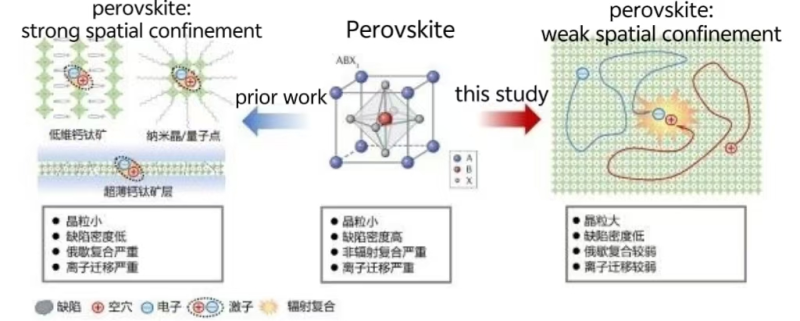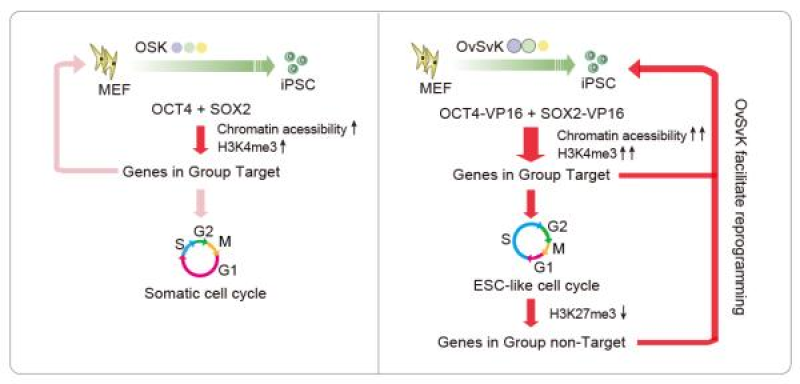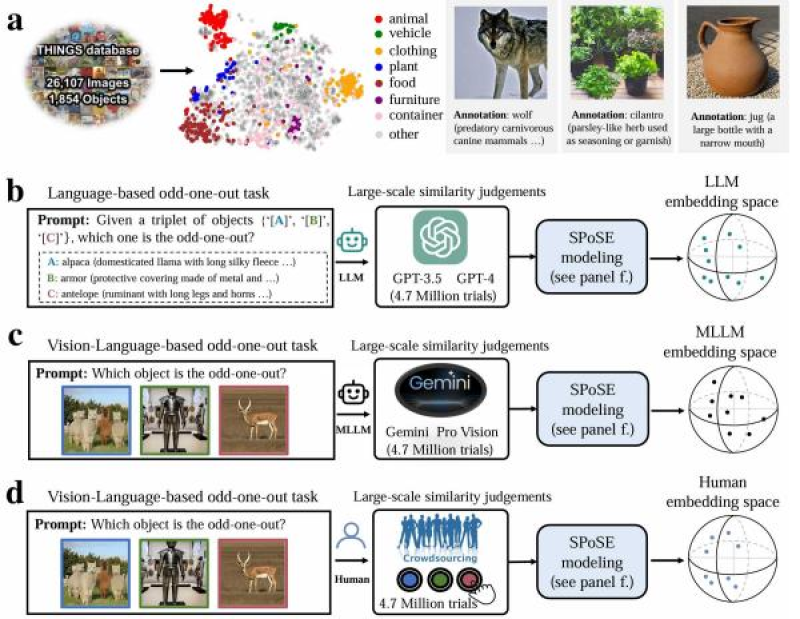Weekly Advanced Technologies〔79〕

Weekly Advanced Technologies〔79〕| Perovskite LEDs Achieve Major Breakthrough: Record-Brightness with 180,000-Hour Lifespan; Scientists Crack the Code to Faster Cellular 'Age Reversal'
Perovskite LEDs have garnered significant attention due to their advantages such as high efficiency and low cost, but they have long faced challenges in terms of brightness and lifespan. Recently, a new technology successfully broke through these bottlenecks, paving the way for their practical application.
Stem cell reprogramming technology holds immense promise for regenerative medicine, yet the efficiency and speed of reprogramming have remained key obstacles to its advancement. Research led by Dr. ZHENG Hui's team at the Chinese Academy of Sciences has uncovered mechanisms to accelerate this process, providing crucial theoretical support for future cell therapies.
Based on the weekly diary of technology provided by the daily list of the NCSTI online service platform, we launch the column "Weekly Advanced Technologies" at the hotlist of sci-tech innovation. Today, let's check out No.79.
1. Nature丨Perovskite LEDs Achieve Major Breakthrough: Record-Brightness with 180,000-Hour Lifespan

Chalcogenides in different spatial confines
A research team led by Professor XIAO Zhengguo from the University of Science and Technology of China has made significant progress in improving the lifespan of perovskite light-emitting diodes (LEDs). They proposed a novel method called "weak spatial confinement," successfully producing all-inorganic perovskite films with larger crystal grains and enhanced high-temperature stability. This breakthrough enabled the LED to achieve a brightness exceeding 1.16 million nits and a theoretical lifespan of over 180,000 hours.
Perovskite is a superior novel material with advantages such as high luminescence efficiency, low cost, and flexible fabrication, making it widely applicable in solar cells, LEDs, and photodetectors. However, in traditional perovskite materials, electrons and holes struggle to recombine efficiently for light emission. Researchers often employ the "strong spatial confinement" strategy, such as using nanoparticles or ultrathin layer structures, to enhance luminescence efficiency. Yet, this method limits brightness and stability, often resulting in LED lifespans of merely a few hours, which fails to meet practical application requirements.
To address this challenge, the team introduced hypophosphorous acid (H₃PO₂) and ammonium chloride (NH₄Cl) into the perovskite lattice, coupled with high-temperature annealing, which substantially reduced defects and improved crystallinity. The fabricated LEDs demonstrated a record efficiency of >22%, a peak brightness of 1.16 million nits, and commercially viable operational stability. This work resolves the critical efficiency-stability dilemma in perovskite LEDs, enabling their deployment in premium displays and high-intensity lighting systems.
2 Advanced Science丨Scientists Crack the Code to Faster Cellular 'Age Reversal'

(Schematic diagram: Mechanism of OvSvK in promoting reprogramming)
A research team led by ZHENG Hui at the Guangzhou Institutes of Biomedicine and Health, Chinese Academy of Sciences has uncovered a novel mechanism that accelerates somatic cell reprogramming into induced pluripotent stem cells (iPSCs). This work has established cell cycle regulation as a direct modulator of epigenetic reprogramming during iPSC generation.
In this study, the team fused VP16 (a herpesvirus-derived transcriptional activation domain) to the core transcription factors OCT4 and SOX2, creating the enhanced factor combination OvSvK. Results demonstrated that OvSvK could induce germline chimeric-competent iPSCs by day 4 of reprogramming—significantly faster than the conventional OSK approach.
Further analysis revealed that OvSvK remodels the cell cycle architecture, specifically shortening G1 phase and prolonging S phase, thereby accelerating the establishment of an ESC-like cell cycle pattern. Through siRNA screening, the team also developed CCC, a cell cycle-modulating factor combination, which similarly enhanced reprogramming efficiency—validating the critical role of cell cycle regulation.
By comparing gene expression and epigenetic modifications across different reprogramming systems, the researchers observed that OvSvK reduced H3K27me3 levels at genes not directly regulated by OSK, a trend also seen in the CCC system, implying that cell cycle modulation influences epigenetic inheritance. Further utilizing the Fucci cell cycle reporter system combined with high-content image analysis, the study demonstrated that OvSvK shortens the G1 phase, thereby impeding H3K27me3 re-establishment and facilitating transcriptional activation.
This study has elucidated the mechanism by which OvSvK accelerates reprogramming through dual pathways—enhancing gene expression and modulating the cell cycle, thereby providing novel perspectives and a theoretical framework for understanding cell fate transition.
3. Joule丨Breakthrough Effecient Catalyst Paves Way for Affordable Green Hydrogen at Scale

A joint team led by Deng Dehui and Yu Liang from the Dalian Institute of Chemical Physics (DICP), Chinese Academy of Sciences, in collaboration with Lu Junling’s team from the University of Science and Technology of China (USTC), discovered that the asymmetric π-electron enrichment on the surface of armored catalysts exhibits a unique confinement effect, which significantly enhances the catalytic activity and stability of platinum atoms.
Leveraging this breakthrough, the researchers engineered a revolutionary electrocatalyst for water electrolysis and successfully deployed it in a kW-class PEM electrolyzer—enabling highly efficient, platinum-lean hydrogen production under acidic conditions.
Experimental results demonstrate that the catalyst-based electrolyzer achieves a current density of 4.0 A cm⁻² at 2.02 V with an ultralow Pt loading of merely 1.2 μgPt cm⁻², while maintaining stable operation for over 1,000 hours. Even when scaled to a 2.85-kW system, it retains exceptional performance, highlighting its strong potential for industrial adoption. This work provides a groundbreaking strategy for developing cost-effective, high-efficiency, and durable water-electrolysis catalysts.
4. Nature Machine Intelligence丨Multimodal AI Achieves Human-Like Conceptual Cognition: Expanding the Frontiers of Machine Intelligence

Schematic representation of the experimental paradigm. a, Examples of object concept sets and images with linguistic descriptions; b-d, Behavioral experimental paradigm and concept embedding space for LLM, MLLM, and humans, respectively
A research team from the Chinese Academy of Sciences (CAS) has, for the first time, demonstrated through behavioral experiments and neuroimaging analysis that multimodal large language models (MLLMs) can spontaneously develop object concept representation systems highly similar to those in humans. The team consists of two institutes under CAS: the Institute of Automation and the Center for Excellence in Brain Science and Intelligence Technology. This finding provides a theoretical basis for building artificial intelligence with human-like cognitive structures.
For decades, artificial intelligence (AI) has been capable of distinguishing cats from dogs in image recognition, yet whether it truly "understands" the meaning of objects remains debated. Researcher He Huiguang notes that current AI lacks the holistic comprehension humans possess—integrating functional, emotional, and cultural significance of objects. To address this, the research team adopted cognitive neuroscience methodologies to design a " triplet-based odd-one-out task," where both large models and humans selected the least similar item from object-concept triplets. Based on 4.7 million judgment trials, they constructed an AI "concept map."
This study systematically identified 66 interpretable cognitive dimensions and conducted a rigorous comparative analysis with human neural activation patterns, revealing statistically significant correlations. The findings have demonstrated that contemporary multimodal macromodels exhibit enhanced alignment with human cognition in terms of judgmental consistency. Notably, while human cognition inherently integrates visual perception with semantic processing, artificial intelligence systems predominantly depend on abstract conceptual frameworks and predefined semantic taxonomies. Advanced AI architectures have achieved an emergent form of anthropomorphic conceptual representation, representing a pivotal milestone in artificial cognitive modeling.